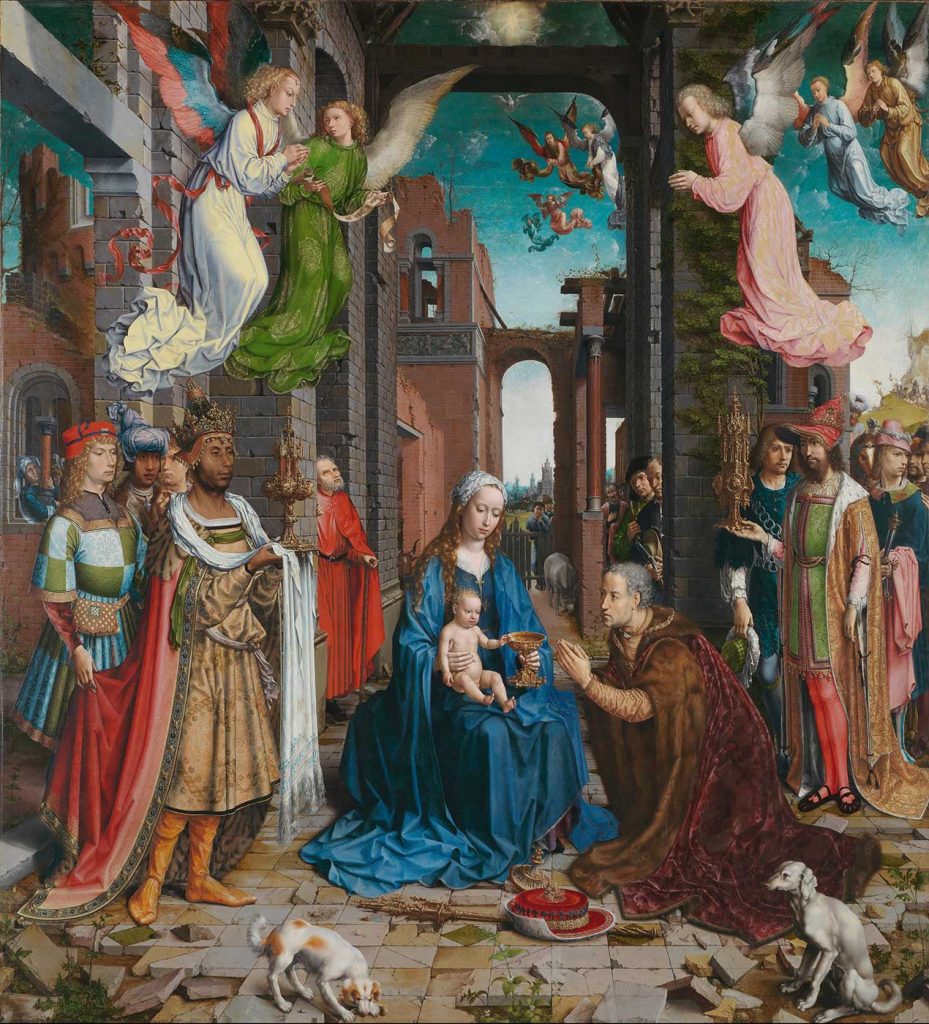
The Adoration of the Kings by Jan Gossaert was created in 1510 – 1515. The painting is in National Gallery, London. The size of the work is 179,8 x 163,2 cm and is made of oil on wood.
About the Work
This large altarpiece is crammed with peasants, animals, angels and richly dressed kings and courtiers, come to worship the infant Christ. This is the Adoration of the Kings (Matthew 2: 11), when the Three Kings followed a star from the east and found Christ in a stable in Bethlehem.
In a palatial but ruined building, the Virgin Mary sits with the Christ Child on her lap. She holds a golden goblet containing gold coins, the lid of which lies at her feet. This is the gift of the elderly king, Caspar, who kneels before her, his hat and sceptre on the ground. His name is inscribed on the lid in gilded letters which cast shadows against a concave outer ring. Christ takes one of the coins in his left hand.
The second king, Melchior, stands behind Caspar on the right, and carries frankincense in an elaborate golden vessel. Opposite him the third king approaches. His name runs around the top of his hat: BALTAZAR. His gift of myrrh is contained in a golden vessel decorated with naked babies. The gifts of gold, frankincense and myrrh are thought to symbolise respectively tribute, sacrifice and burying of the dead. On a capital above Caspar’s head is a representation of the sacrifice of Isaac, which prefigures the Crucifixion. Read more in National Gallery London
About the Artist
Jan Gossaert (c. 1478 – 1 October 1532) was a French-speaking painter from the Low Countries also known as Jan Mabuse (the name he adopted from his birthplace, Maubeuge) or Jennyn van Hennegouwe (Hainaut), as he called himself when he matriculated in the Guild of Saint Luke, at Antwerp, in 1503. He was one of the first painters of Dutch and Flemish Renaissance painting to visit Italy and Rome, which he did in 1508–09, and a leader of the style known as Romanism, which brought elements of Italian Renaissance painting to the north, sometimes with a rather awkward effect. He achieved fame across at least northern Europe, and painted religious subjects, including large altarpieces, portraits and mythological subjects. Read more in Wikipedia
Order a reproduction of this work (printed on canvas)
